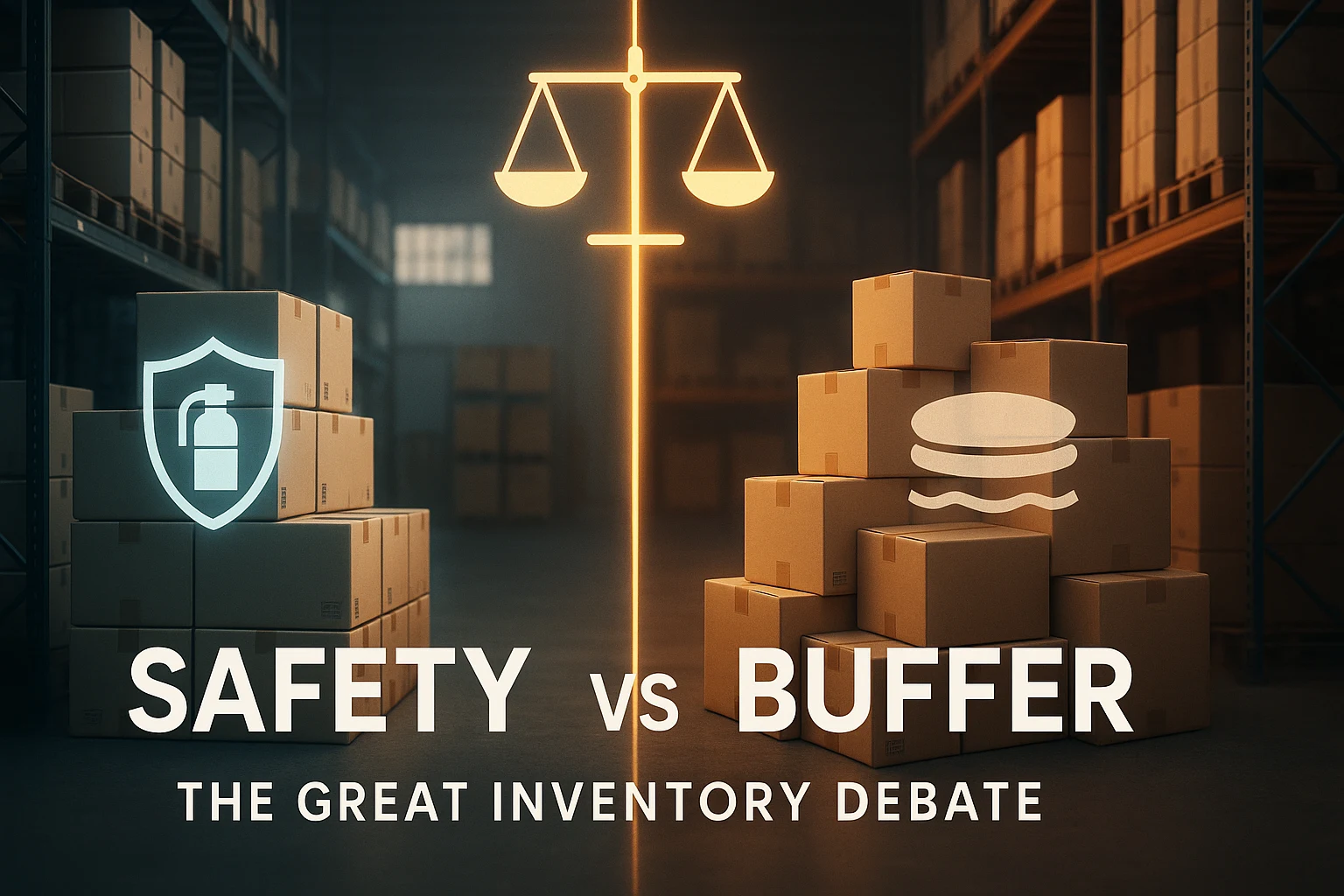Table of Contents
ToggleLet’s talk about inventory management — arguably one of the least glamorous yet most crucial aspects of running a business. It is briefly divided into two compartments: safety stock and buffer stock, described as the unsung heroes of supply chain stability. A basic description of the two is as follows:
- Safety Stock: Think of it as the fire extinguisher of inventory. You don’t want to use it, but when chaos strikes — like unexpected demand spikes or supplier delays — it’s there to save the day.
- Buffer Stock: This is the cushion that smooths out the bumps in regular operations. It’s there to cover minor fluctuations in supply and demand, ensuring things keep moving without hiccups.
Why do we need them?
Imagine running a café. One day, a local influencer posts about your pumpkin spice latte, and you’re hit with triple the usual crowd. Without safety stock, you’re sold out before noon and left with unhappy customers. On the flip side, buffer stock keeps your regular operations running smoothly during small, unexpected blips, like your supplier being late by a day.
The Key Differences:
While safety stock and buffer stock may seem interchangeable, their goals and use cases are distinct:
- Purpose: Safety stock is about guarding against unpredictable events. Buffer stock, meanwhile, handles the foreseeable fluctuations.
- Calculation: Safety stock involves complex formulas factoring in variability in demand and lead times. Buffer stock is simpler, often tied to the average lead time or reorder cycle.
- Usage: Safety stock is used only in emergencies. Buffer stock is for more regular purposes of inventory stocking.
Common Misconceptions:
Breaking down the common myths associated with the two:
- “They’re the same thing.” Nope. This is like saying a flashlight and a chandelier are the same because they both give light.
- “If I have one, I don’t need the other.” Wrong again. A robust inventory strategy often includes both, working together like PB&J to keep your supply chain deliciously smooth.
When to Use Which:
A Practical Guide Here’s where you, dear graduate, become the hero of your supply chain:
- Use safety stock when dealing with high demand variability or unreliable suppliers. It’s your shield against the unknown.
- Use buffer stock in stable environments with predictable fluctuations. It’s your daily defence mechanism.
Real-world examples:
Some examples where such inventory would be helpful:
- Safety Stock in Action: A pharmaceutical company keeps safety stock for life, saving drugs, ensuring patients don’t suffer during supply hiccups.
- Buffer Stock in Action: A supermarket maintains a buffer stock of everyday items like milk and bread to handle small delivery delays without customers noticing.
The Role of Technology:
Advanced inventory management systems can calculate safety and buffer stock for you, factoring in variables you didn’t even know existed. Machine learning and AI are making inventory planning more precise, saving time and money while reducing stress.
Why It Matters:
Whether you’re in logistics, retail, or manufacturing, understanding safety stock and buffer stock is more than just theory. It’s about keeping the gears of business turning, avoiding lost sales, thus maximising efficiency.
निष्कर्ष
Safety stock and buffer stock might sound like small details, but they have a big impact. Knowing when and how to use each is like having a secret weapon in your professional toolkit.


